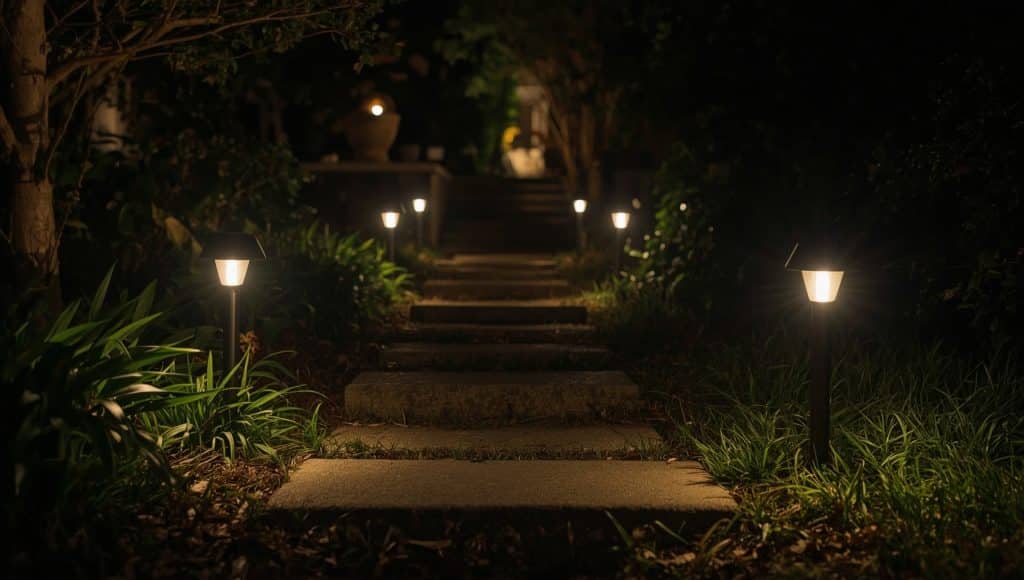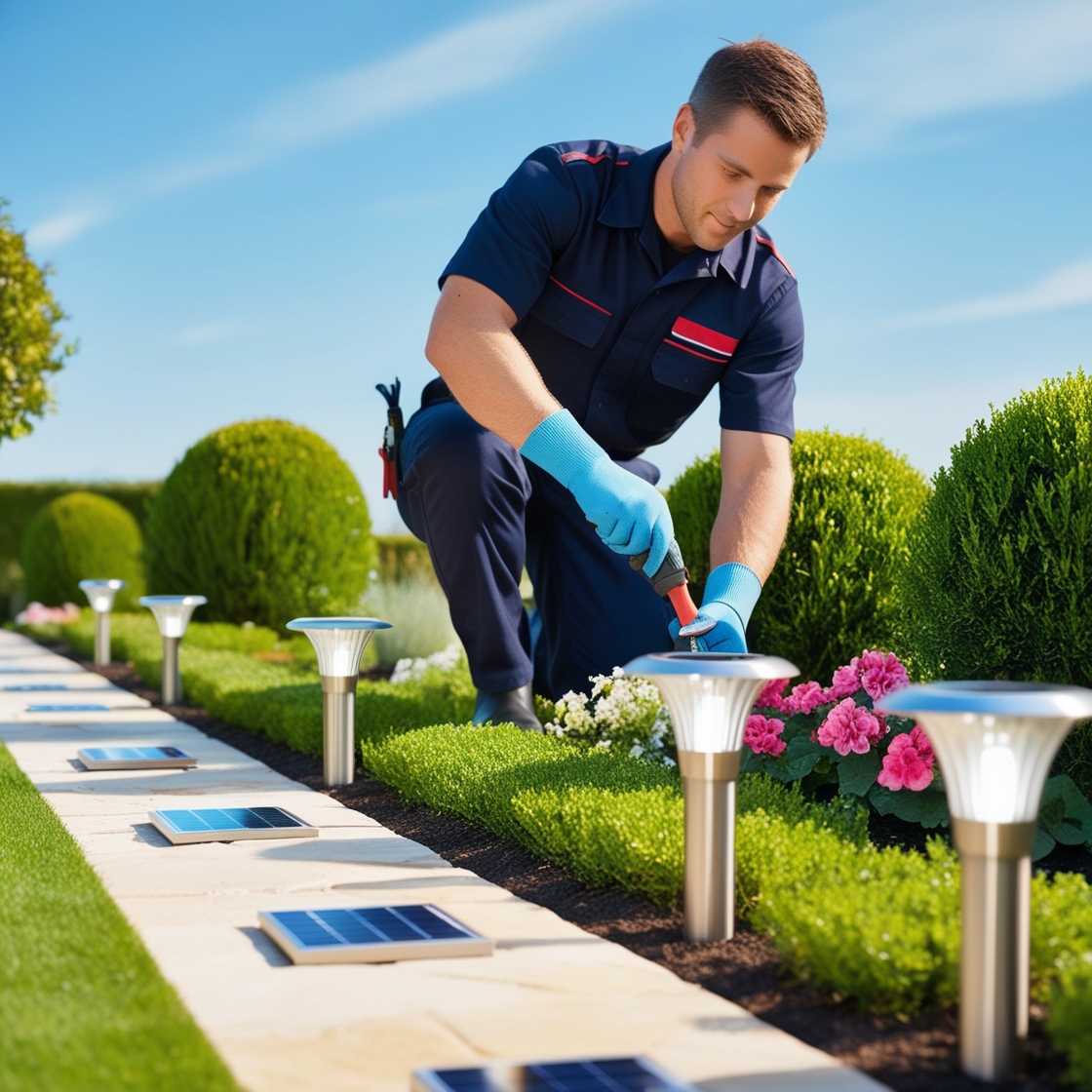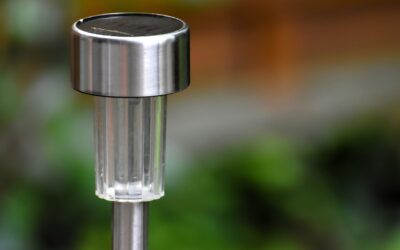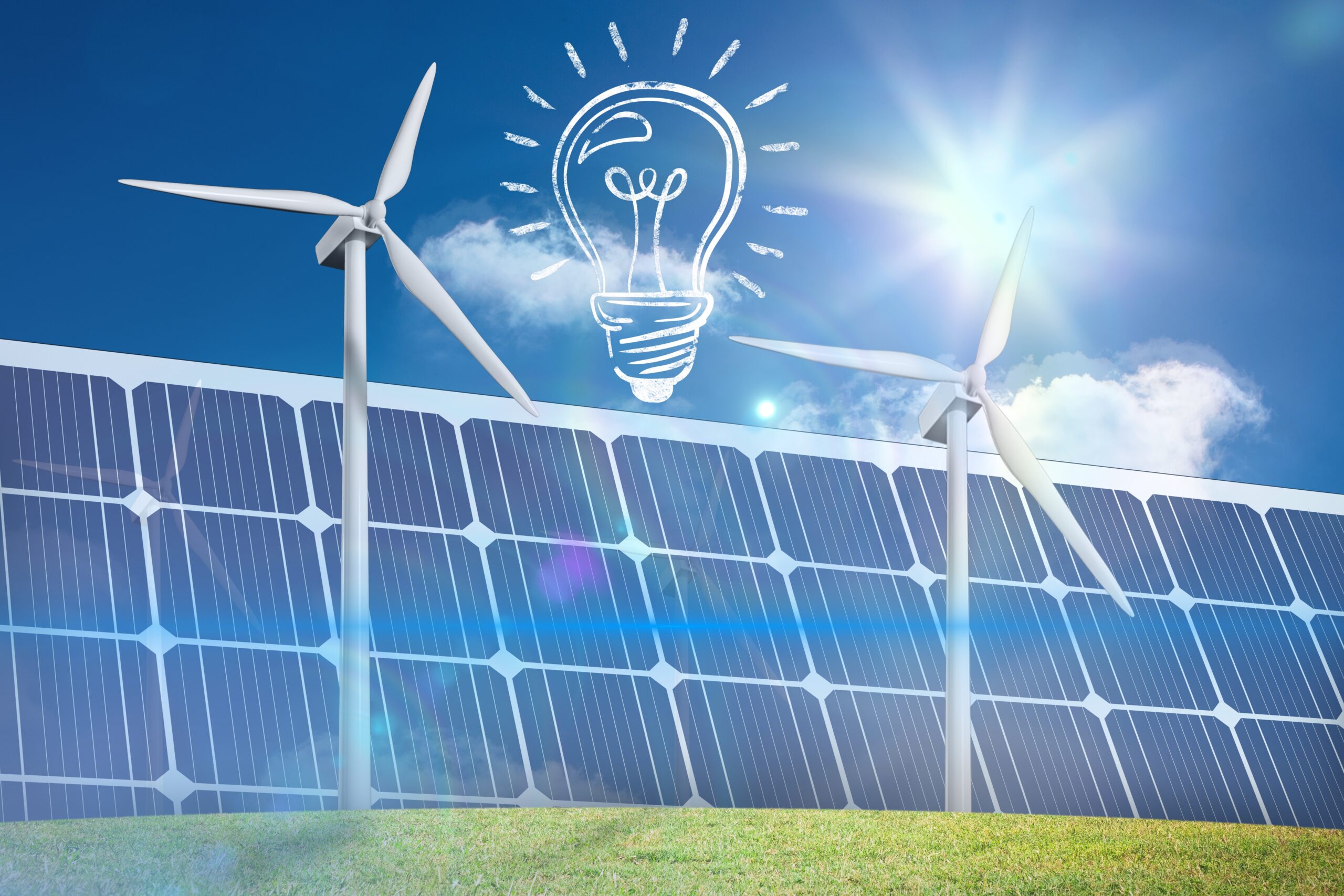There’s a moment every homeowner knows too well: you step outside one evening expecting that soft, reassuring glow from your solar lights… and instead you’re greeted by darkness. No warning. No reason. Just a light that worked last summer and suddenly acts like it has given up on life.
Before you toss it in the bin or start scrolling for replacements, pause. Most solar light failures are embarrassingly simple to fix. And often the difference between spending $0 and spending $20 comes down to knowing exactly which part of the system is failing.
This is where the real showdown begins: the free fix versus the smart fix — and which one actually solves the problem long-term.
Why Solar Lights Stop Working
Solar lights seem simple on the outside, but inside each one is a tiny ecosystem with its own weak points. When one element slips out of alignment, the entire system collapses. Understanding those weak points is the first real step toward a fix that actually sticks.
Dead or Weak Batteries (NiMH/NiCd chemistry & charge cycles)
Almost every solar light failure you’ve ever seen can be traced back to the battery. Most manufacturers include the cheapest cells they can source — low-capacity NiCd or basic NiMH batteries that barely survive a season or two. Over time, each charge cycle eats away at the battery’s ability to store power. The solar panel can be fine and the LED can be perfect, but if the battery can’t hold energy, the light is done.
Upgrading to quality rechargeables designed for repeated cycles — like Panasonic eneloop AA rechargeable batteries — often transforms “dead” lights into reliable workhorses.
Faulty Solar Panels (dirt, oxidation, UV degradation)
Panels fade. Plastic yellows. Dust settles. Even a thin layer of grime can slash charging efficiency. When the panel stops delivering a healthy charge, the battery never fills, and your light flickers out hours before sunrise. Sometimes it’s just cosmetic wear; other times UV exposure slowly destroys the panel’s surface and cuts its performance down to a fraction of what it once was.
Sensor Failure (PIR, photosensor, and wiring issues)
If the light seems confused about when to turn on — or triggers only occasionally — the problem often lives in the sensors. The photosensor handles dusk/dawn detection. The PIR module handles motion. When either starts to misread ambient light or fails internally, the behavior of the light becomes random. You might have a full battery and a clean panel, but a faulty sensor keeps the light in the dark.
Water Ingress & Corrosion
Rain always wins. Moisture finds the tiniest crack, sits inside the housing, and slowly eats away at terminals, contacts, and wiring. Corrosion can mimic almost every other failure: weak light, no light, erratic flickering, or complete silence. Once it sets in, you either repair or replace — ignoring it just buys you a few dim nights at best.

The Cheapest Fixes You Can Do in Under 5 Minutes
Before you spend a single dollar, try the quick wins. These are the moves that solve more problems than you’d expect — fast, free, and almost zero risk.
The “Hard Reset” Method — And Why It Works
Sometimes the tiny controller inside your solar light gets stuck in a weird loop, confused about lighting conditions or charge states. Turning the switch to OFF, covering the panel completely, waiting a few minutes, and then switching it back to ON forces the internal electronics to reboot.
It’s the solar-light version of “have you tried turning it off and on again?” — and it’s shockingly effective for something that costs nothing and requires no tools.
Cleaning Panels for 30–40% More Power
Take a soft cloth. Wipe the panel. That’s it.
A dusty, cloudy, or grimy panel can lose a huge chunk of its charging potential. A quick clean lets the panel pull in far more sunlight, which means a fuller battery and longer runtime. Many “dead” solar lights come back to life instantly once you scrape away a season’s worth of dust, pollen, and bird droppings.
Repositioning for Optimal Photons
Angle matters more than people think. Solar panels hate shade — even partial shade. If one tree branch grew a little over the summer or your light shifted slightly under an eave, that might be enough to ruin your daily charge. Move the light, adjust the angle, or rotate the panel toward stronger sun. Often you’ll see a dramatic difference by the very next evening.
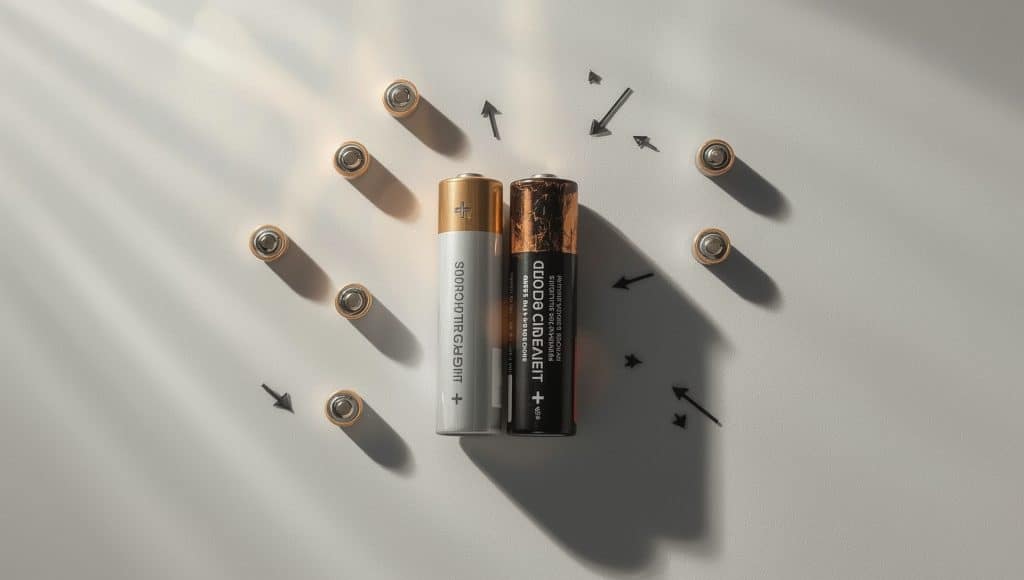
The Best Fixes That Deliver Long-Term Performance
When a quick fix isn’t enough, it’s time to move from “just working” to “consistently reliable.” These upgrades cost a bit more, but they turn your solar lights into something you can actually depend on.
Upgrading to High-Capacity Batteries
A battery swap is the single most impactful upgrade you can make. Stock cells are usually low capacity and cheap. Swap them out for high-quality rechargeables and you instantly change the entire behavior of the light.
For long cycle life and stable performance, Panasonic eneloop AA rechargeable batteries are a proven choice for many users. If you need even more capacity for tougher conditions or longer nights, Panasonic eneloop pro AA high-capacity batteries offer extra punch in the same AA form factor.
Prefer batteries specifically tuned for solar garden lights? VARTA Solar Accu AA 800mAh are designed with low-current solar applications in mind, making them a strong fit for many pathway and garden fixtures.
Swapping Panels or Light Caps
If the housing is cracked or the panel has yellowed beyond redemption, swapping the panel or top cap can give your light a new lease on life. Replacement kits designed for solar LEDs make it easier to keep older lights running without replacing the entire setup.
In many cases, a cap or panel swap also addresses moisture issues, broken seals, and cosmetic damage at the same time — a multi-problem fix for a single upgrade.
Replacing the Motion Sensor Module
Lights with PIR motion sensors can fail internally while the rest of the system still works fine. Replacing the sensor module restores full functionality and costs far less than buying a new high-lumen security light. If the light charges, the LED is bright when forced on, but motion behavior is erratic, the sensor is a prime suspect.

Cheapest vs Best Fix: Cost-Benefit Breakdown
Now comes the decision point: do you patch things with quick wins, or do you invest a bit more and build a system you trust?
What Saves Money Short-Term
Short-term savers are simple:
- Reset the unit
- Clean the panel
- Reposition the light for better sun
These fixes are basically free, and they resolve a surprising number of “dead” solar lights in minutes.
What Maximizes Lifespan
If you want more than survival — if you want consistent, predictable performance — you step into the upgrade zone:
- Upgrade the battery to a quality NiMH cell
- Replace a damaged or heavily faded panel
- Swap a failing motion sensor or photosensor
These fixes cost more than a cloth and a reset, but they buy you real reliability and brightness over seasons, not just nights.
When to Repair vs When to Replace the Entire Unit
A few simple rules keep your decisions clear:
- If your light is more than 3–4 years old and multiple components look tired, replacement is usually smarter.
- If your repair costs are creeping toward 40% of the price of a new, better light, replacement wins.
- If the housing is cracked or heavily corroded, replace immediately — throwing good parts at a dying shell is a waste.
- If only the battery is dead and everything else looks solid, a simple swap is the best-value move you can make.
Step-by-Step Diagnostic Flowchart
When you’re standing in the yard with a dark light in your hand, you don’t want theory — you want a clear, do-this-next path. Use this simple flow as your mental checklist.
1. Cover the Solar Panel
Cover the panel completely with your hand or a cloth.
- If the LED turns on: the battery likely has charge; focus on panel/sensor behavior.
- If it stays dark: you’re probably dealing with a dead battery, broken wiring, or deeper internal failure.
2. Check Battery Health
Remove the battery and test with a multimeter if you have one, or simply swap in a known-good rechargeable.
- If a fresh battery fixes the issue: the old one is done — replace it.
- If the light still won’t turn on: move deeper into panel, sensor, or wiring diagnostics.
3. Re-Charge in Full Sun
Place the light in direct sunlight for 4–6 hours and test again at night.
- If it works after proper charging: you had a placement or shade problem.
- If it still fails: panel efficiency, sensor logic, or internal damage are next on the list.
4. Inspect for Moisture or Corrosion
Open the housing if possible and look for rust, greenish buildup, or moisture droplets.
- If corrosion is present: decide whether the unit is worth cleaning and repairing, or if replacement makes more sense.
- If everything looks dry and clean: return to the battery and panel as prime suspects.
Common Symptoms and the Right Fix
When you’re in a hurry, it helps to map what you see to what you should do:
- Light flickers on and off → Clean the panel, reset the unit, and check battery contacts.
- Light turns on at dusk but dims quickly → Battery is weak or near the end of its life.
- Light never turns on → Dead battery, blocked panel, failed sensor, or internal wiring problem.
- Motion sensor behavior is erratic → Sensor module or related circuitry is likely failing.
Products / Tools / Resources
If you want to move from guessing to fixing, these types of products are the ones that actually make a difference in real-world solar setups.
Panasonic eneloop AA Rechargeable Batteries
Reliable, low self-discharge NiMH cells that hold charge well and handle repeated cycles — ideal for most solar path, garden, and accent lights.
Panasonic eneloop pro AA High-Capacity Batteries
High-capacity version for demanding conditions, longer nights, or higher-output fixtures where you need maximum stored energy.
VARTA Solar Accu AA 800mAh Batteries
Rechargeable AA cells developed specifically with solar garden lights in mind, tuned for low-current, steady output.
Solar Pathway Lights (Full Replacement)
If your old units are beyond saving, a fresh set of modern solar pathway lights with improved panels, batteries, and housings can be the cleanest upgrade.
Solar Wall Light with Motion Sensor (Security Upgrade)
For entrances, garages, or darker corners that need both light and detection, a dedicated solar wall light with a motion sensor offers a simple, wire-free security boost.
As an Amazon Associate, I earn from qualifying purchases.


